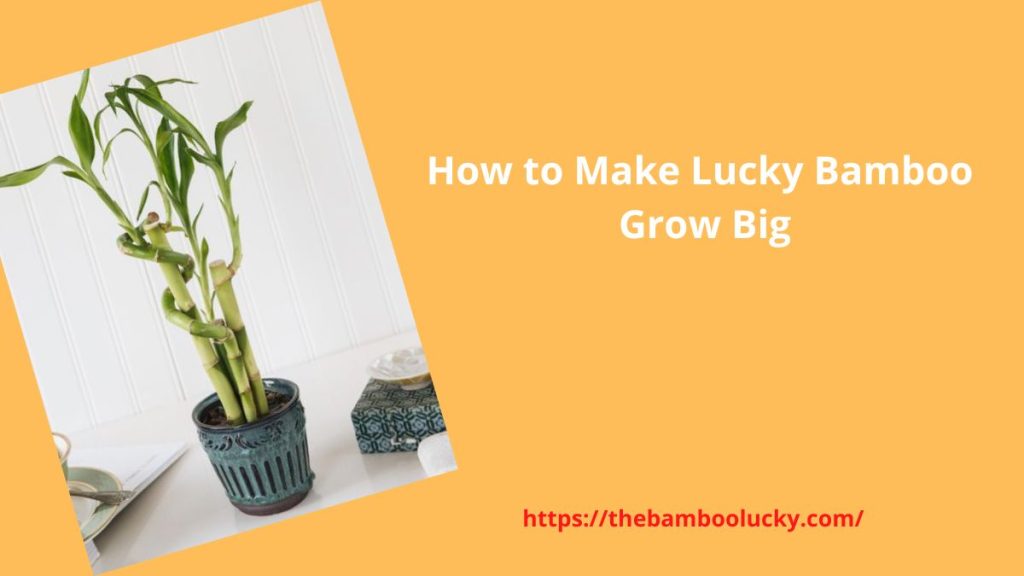If you love lucky bamboo, then you must order this plant now! It’s a West African native of Cameroon and is marketed to bring good luck, health, and fortune to its owner. Although it doesn’t belong in the bamboo family, with its distinctive segmented green stalks and long, pointy green leaves, it does look like a miniature version of bamboo.

The plant is hardy, growing to at least 8 feet tall and 2 feet wide under optimal conditions. It has an evergreen habit, both indoors and when planted in the landscape.
This is a popular tree and can grow to anywhere between 7 and 12 feet tall. It will get much bigger than this when grown outside in its natural habitat.
Table of Contents
Growing Conditions
To keep your lucky bamboo healthy and growing to its full potential in height and size, it needs the right growing conditions. Though it’s considered a low-maintenance plant and not an aquatic plant, it will happily grow in water, as well as soil, for years.
If you’ve just started growing your lucky bamboo, it’s important to keep it watered and to add rocks to the bottom of the container. Lucky bamboo grows best in pots or other containers that drain well, like clay pots or terra cotta.
Have Look: 2 Way to Propagate Lucky Bamboo
Whether you live in an apartment, condo, or home, you can plant tomatoes in a wide range of soil conditions. If you have trouble getting a good crop, try one of these tips.
Optimal Lighting
Your lucky bamboo grows well when it’s exposed to direct sunlight for 6 hours per day. If you live in a place with a short growing season, don’t worry, you can grow this plant year round indoors by placing it on a south-facing windowsill.
If you place it where it gets some shade during the day, your indoor plants will have a wonderful growing season. Avoid placing it in areas exposed to full sunlight. If your plant suffers from leaf burning, you’ll see signs of that damage.
Moisture Requirements
Lucky Bamboo does need regular watering, but not as much as other houseplants. Check the leaves every day or two for signs of yellowing. Remove any wilted leaves and replant them immediately in fresh potting soil that has been enriched with organic fertilizer, such as blood meal.
To grow plants in the garden, it’s a good idea to check the soil and add any necessary nutrients and fertilizers. If the plants are growing in a container, keep it full of water.[The use of computer technology in the formation of anesthesiologists.
Have Look: Things to know While Cutting Lucky Bamboo In Half
To remove any chemical buildup, empty the container and refill it with fresh water every month.
What to Use to Water Indoor Plants
We don’t really know what causes lucky bamboo plants to die off or stop growing when the soil becomes contaminated with salt and fluorides. What we do know is that most lucky bamboo plants don’t like highly concentrated salt or fluoride in their soil.
You can tell if your lucky bamboo has a salt or fluoride problem when the tips of its leaves start to turn yellow and burn, although this may also be the result of using too much fertilizer. To remedy this problem, water your lucky bamboo with rainwater or with distilled or purified water.
Fertilizing Lucky Bamboo
You’ll learn how to fertilize lucky bamboo, so you won’t waste any time trying to grow your lucky bamboo to its maximum size. If you haven’t already, now’s the time to get your lucky bamboo growing faster than ever!
You may find it hard to believe, but lucky bamboo will benefit from a diet high in calcium and magnesium – two nutrients that many plants don’t require, as long as their soil has good levels of these two minerals. Lucky bamboo will tell you when its nutrient needs have been met, and your best bet is to stop watering it until you know that it’s time to feed.
When planting lucky bamboo, follow the instructions on the package for the type of soil you’re using and add some fertilizer to the container. Follow instructions for the amount, and then half or quarter the plant material before adding it to the container.
Don’t Prune If You Want Size
If your primary goal is for your lucky bamboo to grow as tall and luscious as you can make it grow, don’t prune the stalks. Once you cut the stalk, it will not grow any taller and will remain at the cut size.
For the largest bamboo of all, just don’t prune it at all. Meet all the basic requirements for a proper growing environment. Give it some time, and it will reward you with the biggest, longest, and most beautiful bamboos ever!
Lucky bamboo propagates well in containers. Propagate lucky bamboo by cutting a stalk just above a node, and transplanting it into a container.
Have Look: Black Spots on Lucky Bamboo – What to Do?
